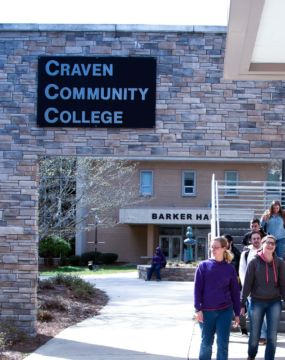NC in Focus
Keep up with our latest demographic insights

This is the second post in a three-post series looking at in-migration and out-migration in North Carolina. Read the first post in the series, "NC is rapidly growing. Where are our new residents moving from?" Between 2017 and 2018, North Carolina grew by nearly 87,000 new residents from net in-migration from other states and countries. But that growth was concentrated in several areas within the state. Today, we’re looking at which NC counties have seen…

North Carolina’s population has grown by 848,000 new residents, or 8.9%, since the 2010 Census, rising to 10.4 million residents as of 2018. The state’s annual growth slowed during the Great Recession of 2008 and subsequent recovery period but began to accelerate mid-decade. Since 2015, North Carolina has averaged more than 110,000 new residents each year. Most of this growth is from net migration, meaning more people are moving to our state than those who…

North Carolina’s Hispanic population is nearing 1 million, with 997,000 residents in 2018. The state’s Hispanic/Latino population grew from just over 75,000 in 1990 to 800,000 in 2010. Between 2010 and 2018, the U.S. Census Bureau estimates that North Carolina’s Hispanic population grew by 197,000 new residents, an increase of 24.6%, faster than the growth of this population nationwide (18.6%). More than one in four NC Latino residents live in two counties: Mecklenburg (148K) or Wake (113K).

Each September, local community leaders gather for a comprehensive overview of the Chapel Hill-Carrboro community. Hosted by The Chamber for a Greater Chapel Hill-Carrboro, the State of the Community Report details how Chapel Hill, Carrboro, and the surrounding area are performing on various social, environmental and economic indicators. How Carolina Demography worked with the Chamber for a Greater Chapel Hill-Carrboro For the third year in a row, Carolina Demography will provide social, economic, and demographic…

It’s been almost three years since the 2016 general election and in that time, there have been demographic shifts in North Carolina. With just under a year before the 2020 election cycle, we’ve broken down the changes by partisan composition and who makes up our newly registered voting population. First, we should note: our state’s population continues to grow North Carolina has experienced steady population gains since 2016, with net gains masking a larger turnover…

Last week, we highlighted the programs of study where NC Community College graduates were making the highest average annual wages five years after graduation, as well as the percentage employed who graduated from that program. This week, we’re doing the same thing for UNC system graduates. This data comes from the NC Tower database, maintained by NC Department of Commerce, which provides aggregate information on degree attainment, programs of study, and wage/employment information from public postsecondary institutions in North Carolina. For…

One of many decisions that students transitioning from high school to postsecondary education are faced with is what program of study and credential to pursue. This can be challenging, since students are often not aware of the opportunities and salary potential associated with different careers. The NC Tower database can provide some insight into this important question. NC Tower is a web-based data delivery system, maintained by the NC Department of Commerce, which provides aggregate…

2020 Update: The George Washington Institute for Public Policy has expanded its analysis of the fiscal impact of the census. According to their most recent estimate, there are $1.5 trillion dollars associated with 316 census-guided federal programs. In FY17, North Carolina received nearly $44 billion. In late June, I spoke on a panel focused on population trends in the Charlotte metropolitan region, the 2020 Census, and how businesses and local governments are gearing up for…

A complete and accurate census count is incredibly important. The census shapes how billions of dollars in federal funding are distributed, how congressional seats are apportioned, and how communities plan for their future residents. But certain populations have historically been undercounted in the census, due to a variety of factors. Undercounting these communities skews the census data that’s used to ensure fair political representation and support community planning. To help North Carolina achieve a complete…

Note: This is second in a series of posts on county health rankings from the Robert Wood Johnson Foundation. The first post on Length of Life can be found here. The Robert Wood Johnson Foundation (RWJF) releases annual county rankings on different aspects of community wellness across five major categories – Length of Life, Quality of Life, Health Behaviors, Clinical Care, and Social and Economic Factors. This blog focuses on Quality of Life measures in…
Your support is critical to our mission of measuring, understanding, and predicting population change and its impact. Donate to Carolina Demography today.